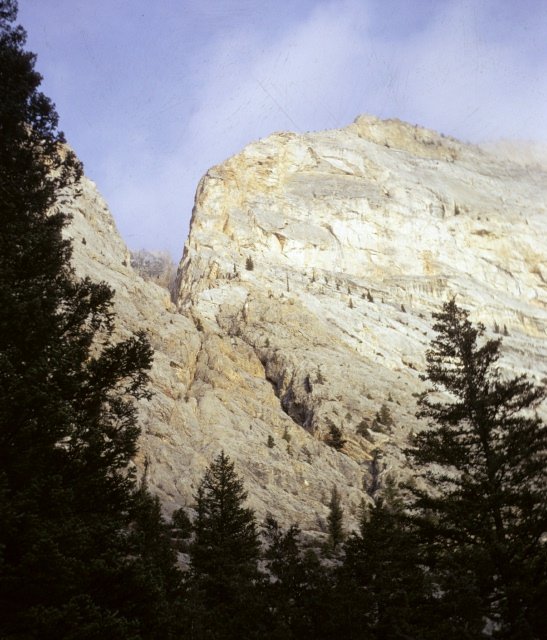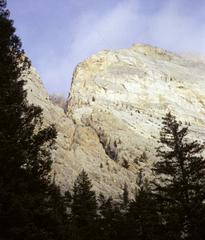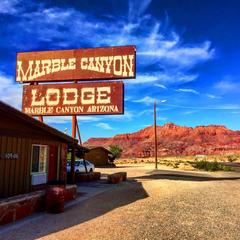
Visiting Lees Ferry: Hours, Tickets, and Tips for Marble Canyon, United States
Date: 24/07/2024
Introduction
Lees Ferry, situated in the picturesque Marble Canyon of northern Arizona, is a destination of immense historical and recreational significance. It stands at the confluence of the Paria and Colorado Rivers, a site with a history dating back to pre-Columbian times. Initially inhabited by Paleo-Indians around 11,500 years ago, followed by various indigenous cultures, Lees Ferry has been a crucial point of interest for many centuries (Wikipedia). Named after John Doyle Lee, a Mormon pioneer, Lees Ferry was established as a ferry crossing in the mid-19th century, revolutionizing transportation and facilitating the Mormon expansion across the American Southwest (Follow That Nerd). Today, it serves as the official beginning of Grand Canyon National Park on the Colorado River, managed by the National Park Service within the Glen Canyon National Recreation Area. Lees Ferry is renowned for its world-class fishing, historic sites, and as a launch point for river rafting trips through the Grand Canyon, making it a must-visit destination for adventurers, history enthusiasts, and nature lovers (NPS).
Table of Contents
- [Introduction](#introductionintroduction)
- [Early Inhabitants and Explorers](#early-inhabitants-and-explorersearly-inhabitants-and-explorers)
- [Establishment of Lees Ferry](#establishment-of-lees-ferryestablishment-of-lees-ferry)
- [Role in Mormon Expansion](#role-in-mormon-expansionrole-in-mormon-expansion)
- [Military and Economic Significance](#military-and-economic-significancemilitary-and-economic-significance)
- [Transition to Modern Use](#transition-to-modern-usetransition-to-modern-use)
- [Lees Ferry Today](#lees-ferry-todaylees-ferry-today)
- [Visitor Tips](#visitor-tipsvisitor-tips)
- [Getting There](#getting-theregetting-there)
- [Visiting Hours](#visiting-hoursvisiting-hours)
- [Tickets and Fees](#tickets-and-feestickets-and-fees)
- [Activities](#activitiesactivities)
- [Fishing](#fishingfishing)
- [Boating and Rafting](#boating-and-raftingboating-and-rafting)
- [Hiking Trails](#hiking-trailshiking-trails)
- [Historical Sites](#historical-siteshistorical-sites)
- [Camping](#campingcamping)
- [Significance in Water Management](#significance-in-water-managementsignificance-in-water-management)
- [Accessibility](#accessibilityaccessibility)
- [FAQ](#faqfaq)
- [Conclusion](#conclusionconclusion)
- [References](#referencesreferences)
Early Inhabitants and Explorers
Lees Ferry, situated in northern Arizona, has a history that dates back to pre-Columbian times. Initially inhabited by Paleo-Indians around 11,500 years ago, followed by the Archaic culture approximately 8,000 years ago, the area saw later settlements by the Anasazi, Paiute, and Navajo peoples in the last 1,000 years. The Anasazi utilized the area around the 12th century A.D., as evidenced by ruins discovered nearby on the Paria River (Wikipedia).
Establishment of Lees Ferry
Named after John Doyle Lee, a Mormon pioneer, Lees Ferry was established in the mid-19th century. Following his excommunication from the Mormon Church due to his involvement in the Mountain Meadows Massacre, Lee was ordered to create a ferry crossing at the confluence of the Paria and Colorado Rivers. The first boat launched in 1873, revolutionizing transport between settlements in Utah and Arizona (Follow That Nerd).
Role in Mormon Expansion
The establishment of Lees Ferry was pivotal for Mormon expansion. Before the ferry, colonists had to travel over 800 miles by wagon to cross the Colorado River. The ferry eased this journey and facilitated the movement of settlers, despite land disputes with the native Navajo tribes. Consequently, a fort and supporting facilities were added to the site of Lee’s homestead (Atlas Obscura).
Military and Economic Significance
Lees Ferry served as a military outpost for 19th-century settlements in Utah and a center for limited gold seeking. In the 1920s, it became the principal point for measuring river flow to determine water allocations in the Colorado River basin. The ferry demarcates the boundary between the Upper and Lower Basins of the Colorado River, with states in each basin legally allocated one-half of the river’s natural flow (Wikipedia).
Transition to Modern Use
Boat service at Lees Ferry continued for over 55 years before being superseded by a bridge in the early 20th century, which allowed for more efficient automobile travel. Today, Lees Ferry is a well-known fishing and boat launching point, including for whitewater rafting trips through the Grand Canyon (Wikipedia).
Lees Ferry Today
Lees Ferry is considered the official beginning of Grand Canyon National Park on the Colorado River. It is managed by the National Park Service within the Glen Canyon National Recreation Area. The area features several historic buildings built during and after John D. Lee’s tenure, along with remnants of the Charles H. Spencer. A small historical cemetery is also located nearby (Wikipedia).
Visitor Tips
Getting There
Lees Ferry is accessible via Lees Ferry Road, which splits off from U.S. Route 89A at the hamlet of Marble Canyon, Arizona. It is 42 miles from Page, Arizona, and 85 miles from the North Rim of the Grand Canyon. The Lees Ferry Junction and Park Entrance is in Marble Canyon, just west of the Navajo Bridge Interpretive Center. A paved road leads 5 miles to the Ferry area (NPS).
Visiting Hours
Lees Ferry is open year-round, 24 hours a day. However, services and facilities may have varying hours, so it’s best to check in advance (NPS).
Tickets and Fees
There is no entrance fee for Lees Ferry specifically, but visitors will need to pay the standard Glen Canyon National Recreation Area entrance fee. Annual passes are also available (NPS).
Activities
Fishing
Lees Ferry is renowned for its world-class trout fishing. The main attraction for anglers is the rainbow trout (Oncorhynchus mykiss), which thrive in the cold, oxygen-rich waters of the Colorado River. These fish can grow to impressive sizes, often exceeding 20 inches in length. The trout here are known for their vibrant colors and strong fighting spirit, making them a prized catch for any angler. In addition to rainbow trout, anglers might encounter brown trout and cutthroat trout, though they are less common. Fishing at Lees Ferry is a year-round activity, but certain times of the year offer better conditions and higher chances of success. For more details, visit Lees Ferry Anglers.
Boating and Rafting
Lees Ferry is the only place within Glen Canyon where visitors can drive to the Colorado River in over 700 miles of canyon country, right up to the first rapid in the Grand Canyon. This makes it a popular launch point for river runners embarking on trips down the Grand Canyon. The launch ramp at Lees Ferry is divided into a gravel section downstream for loading and launching downriver trips, and a paved section upstream for all upstream use. All river users need to be able to access these ramps in a timely manner for their intended purpose, so it is important not to block the paved section. Ready your boats and kayaks before you launch. For more information, visit the National Park Service.
Hiking Trails
Lees Ferry offers several hiking trails that provide stunning views of the Colorado River and the surrounding landscape.
-
Spencer Trail: This 3.8-mile out-and-back trail is popular among hikers and offers majestic views of the Colorado River and Vermillion Cliffs. With over 1600 feet of elevation gain, it is rated as difficult and can be quite strenuous. The trail is well-maintained, but hikers should be prepared for a challenging hike. More details can be found here.
-
Dominguez Pass Loop: This trail starts at the Spencer Trail and then goes cross-country to Dominguez Pass. It is a 7.5-mile loop with over 1800 feet of elevation gain. Hikers will need good route-finding skills and some expertise in hiking, as this trail isn’t for novice hikers. Expect to spend about six hours on this loop. For more information, visit Drivin’ & Vibin’.
-
Lees Ferry Historic Site & River Trail: Just upstream from the Lees Ferry launch ramp is the ferry crossing site and several historic buildings. Different ferryboats and pioneers, miners, Indians, and tourists crossed here from 1872 until 1928. The complete self-guided walking tour of the orchard, log cabins, stone ranch house, and pioneer cemetery is about a 1-mile (1.6-km) round trip. More details can be found here.
Historical Sites
Visitors can explore the remnants of the historic site, including the old structures and the ferry crossing. Interpretive signs and exhibits provide insights into the area’s history and significance, offering a glimpse into the lives of the pioneers who once called this place home (Lees Ferry).
Camping
Lees Ferry offers ample camping opportunities, with each spot providing stunning views of the surrounding landscape.
-
Lees Ferry Campground: This campground is located near the river and offers basic amenities such as picnic tables, fire rings, and restrooms. It operates on a first-come, first-served basis. For more information, visit Drivin’ & Vibin’.
-
Primitive Sites along the Colorado River: There are five primitive sites along the Colorado River, also available on a first-come, first-served basis. These sites offer a more rustic camping experience and are ideal for those looking to immerse themselves in nature. More details can be found here.
Significance in Water Management
Lees Ferry has long been a focal point of American Southwest water disputes. It serves as the principal point for measuring river flow to determine water allocations in the 246,000-square-mile Colorado River basin. The Glen Canyon Dam, located a short distance upstream, completely regulates the river flow past Lees Ferry, making it a critical site for water management in the arid West (Wikipedia).
Accessibility
Lees Ferry is accessible to visitors with disabilities, with facilities and trails designed to accommodate those with mobility issues (NPS).
FAQ
What are the visiting hours for Lees Ferry?
Lees Ferry is open year-round, 24 hours a day. However, services and facilities may have varying hours, so it’s best to check in advance.
How do I buy tickets for Lees Ferry?
There is no specific entrance fee for Lees Ferry, but visitors need to pay the standard Glen Canyon National Recreation Area entrance fee.
Is Lees Ferry accessible for visitors with disabilities?
Yes, Lees Ferry has facilities and trails designed to accommodate visitors with disabilities.
Conclusion
Lees Ferry’s historical and economic significance, combined with its modern-day recreational opportunities, make it a must-visit destination for history enthusiasts, anglers, and outdoor adventurers alike. Its unique geography and rich history offer a captivating glimpse into the pioneering spirit of the American Southwest. For the latest updates and more information, visit the National Park Service website and follow us on social media.
References
- Wikipedia. (n.d.). Lees Ferry. Retrieved from Wikipedia
- Follow That Nerd. (n.d.). Lees Ferry History & Hiking. Retrieved from Follow That Nerd
- Atlas Obscura. (n.d.). Lees Ferry and Lonely Dell. Retrieved from Atlas Obscura
- NPS. (n.d.). Lees Ferry. Retrieved from NPS


